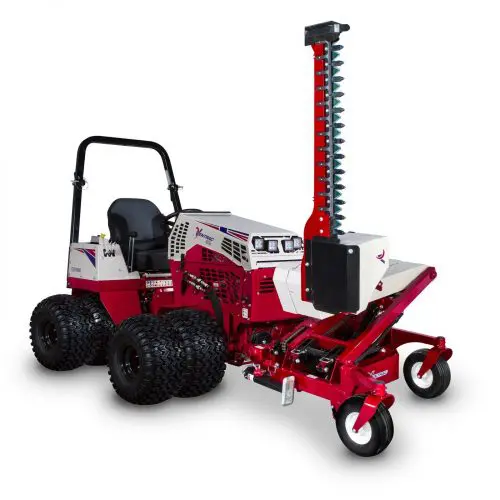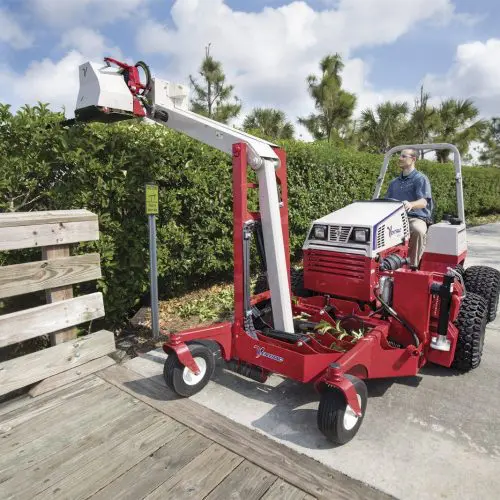Learn how to get the most out of your Boom Mower with some tips and tricks in this Ventrac Boom Mower operational overview. In addition, you’ll find out how to extend your mower reach and what makes the Boom Mower valuable as an attachment for ponds, creeks, hedges, and more.
Aaron discusses the working structure of the unit as a hydraulically driven mower head. The 39-inch, double-action, sickle-bar style cutting head is very smooth and quiet in operation.
The Boom Mower differs from most mowers as it slices material rather than chopping. The cutting head is ideal for cutting close to the water and therefore is a valuable asset for mowing around ponds, creeks, and dams. Thin native grasses, cat-tails, shrubs, hedges, or tree branches are all easily cut with the sickle head.
And while most boom mowers connect to the middle or back of the machine, making them hard for the operator to see during use, the Ventrac boom mower attaches to the front of the tractor, providing the best possible visibility and control.
Standard operating instructions are explained on controlling the boom mower using dual auxiliary hydraulics and a 12-volt. It is recommended to continuously operate the Boom Mower in the float position. And the movements of the Boom Mower are controlled with the secondary SDLA lever. The maximum vertical cutting height is over 140 inches, making it perfect for hedges, trees, and shrub trimming.
The Boom Mower also features two jack stands and folds into itself when not in use for easy, compact storage in the barn or on a trailer, providing extra space for additional equipment.
Ventrac tractors are already capable of driving in places where most machines cannot. Combine that with the Boom Mower, which reaches over 9 feet away from the tractor, and you have one of the best combinations of equipment in existence for managing tough vegetation on difficult terrain.
Applications include mowing steep ditches, reaching under fences and guardrails, cutting vegetation around ponds, lakes & streams, trimming hedges and other shrubs, and trimming tree branches along trails, pathways, or roads.



